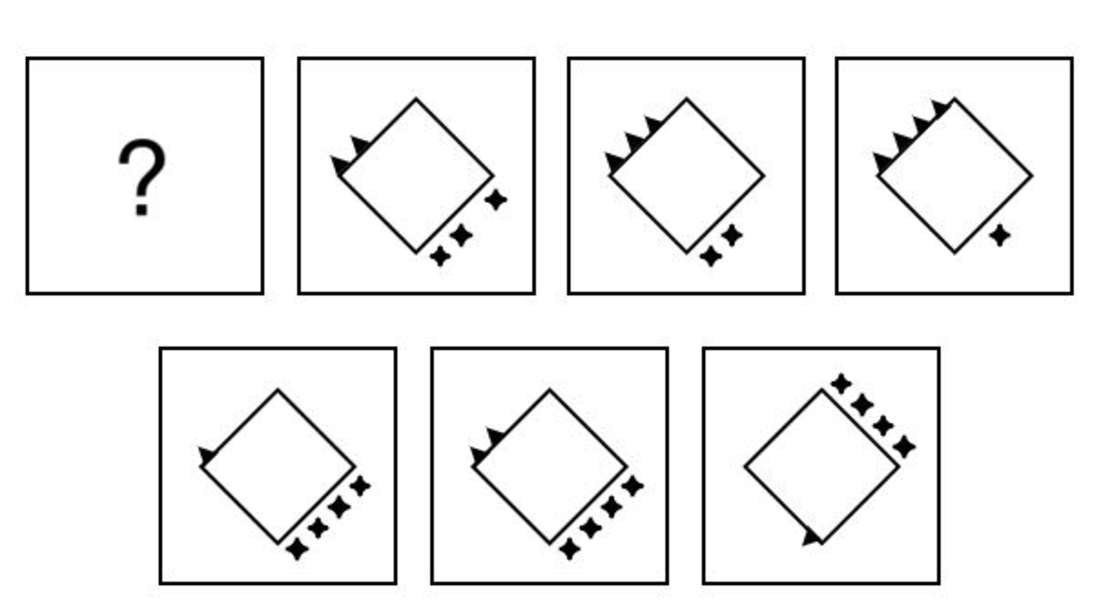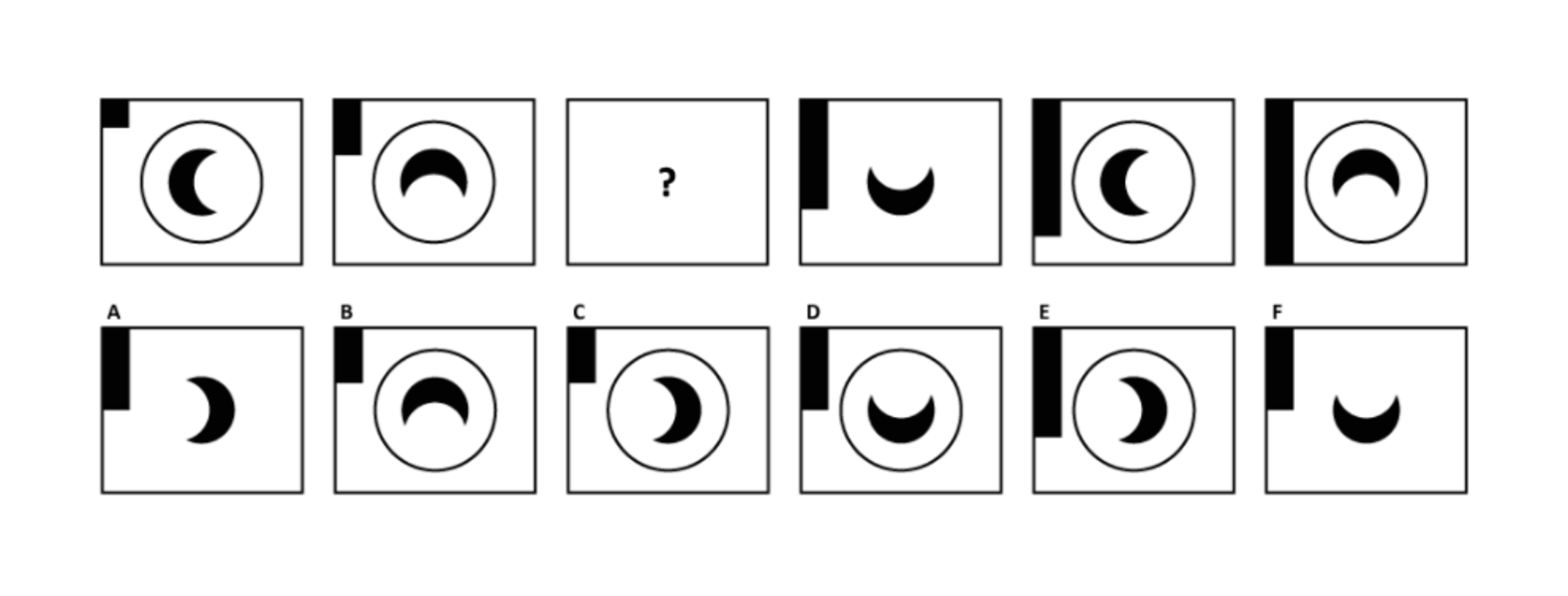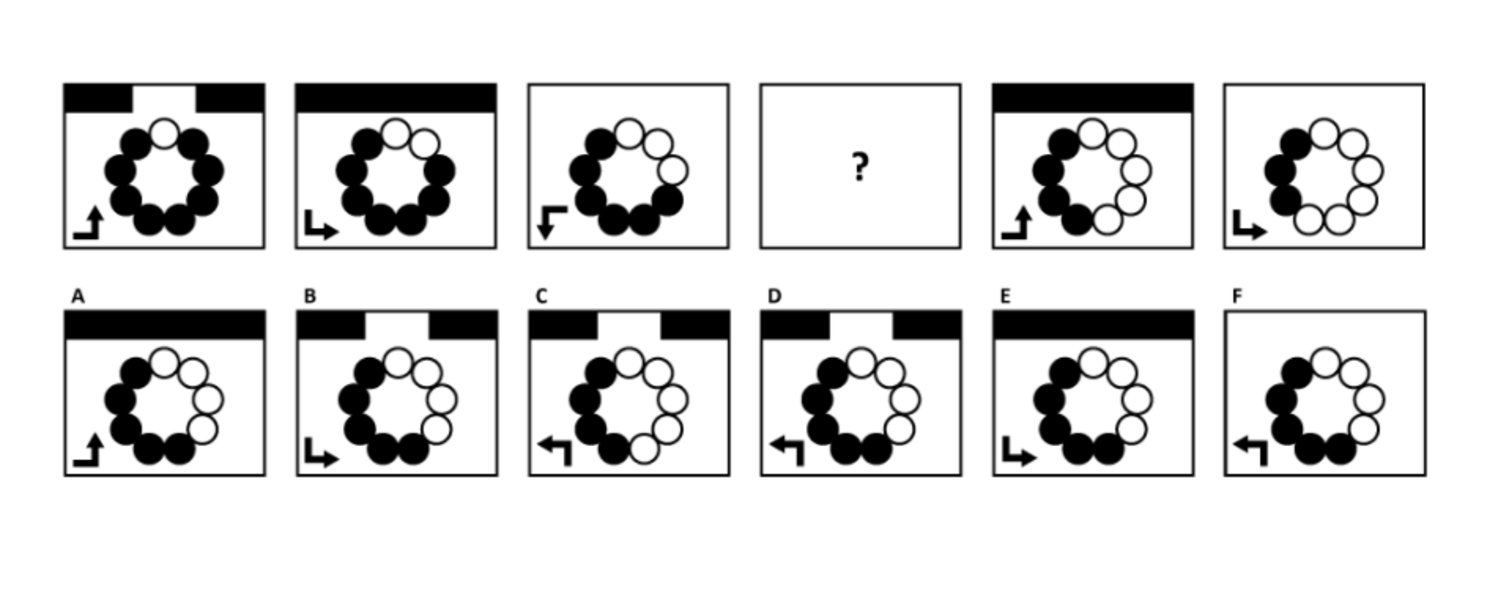Sequencing questions are probably the most common type of question that appear in diagrammatic reasoning tests. These questions require you to complete a sequence with a missing block. You will be given some suggestions and it’s your job to identify the right one.
When trying to work out a pattern try checking for these things in the sequence:
Rotation - how many degrees has a shape turned and in what direction?
Alteration - has the shape changed into something else and then changed back?
Consistency - what about the image stays the same throughout the sequence?
Duplication - has the number of contained elements increased or decreased?
Attention to detail - sometimes you just have to look carefully at the diagrams
Here’s an easy one:
We can see a sequence of shapes and three possible suggestions for the missing tile. Quite quickly we can tell that the triangles are increasing in number and stars are decreasing in number.
If we work backwards we can work out that there should be one triangle and four stars. We should also notice that they are always in the same place.
Following this pattern, we can deduce the correct answer is C.
Example Questions
Find the missing item in each sequence.
Q1)
Q2)
Solutions
Q1) Answer = A: In this sequence the large black circle appears for two boxes, disappears for two and then reappears for the final two. The crescent shape in the middle moves 90 degrees clockwise as the sequence progresses.
The third consideration are the shaded boxes on the left. The sequence starts with just the top box shaded and then it progressively ‘grows’ until the whole length of the box is shaded.
Q2) Answer = D: There are three rules impacting this question. The first one is that as the sequence progresses one more circle turns from shaded to white. So in the first box there is just one white circle, in the second there are two and so on.
The second rule applies to the arrow in the bottom right hand corner. This turns 90 degrees clockwise with each step in the sequence.
The third and final rule relates to the blue shaded line at the top of the box. It moves from partially shaded to completely shaded and then not shaded at all. It then reverts back to partial shading, then complete then none. Option D meets all three rules and is therefore the correct response.




